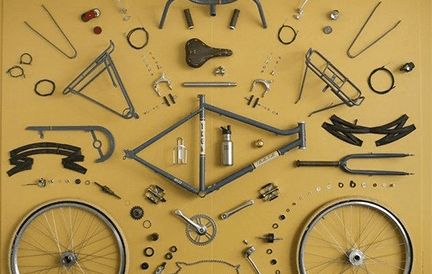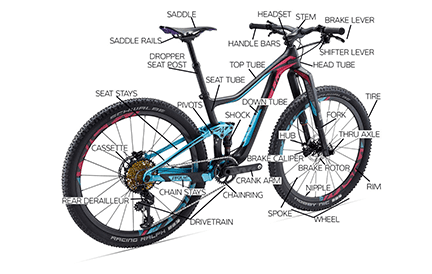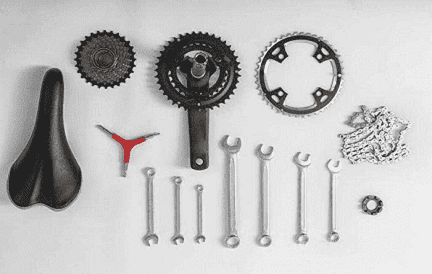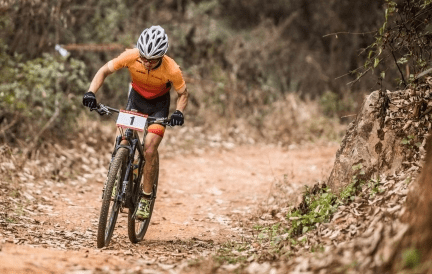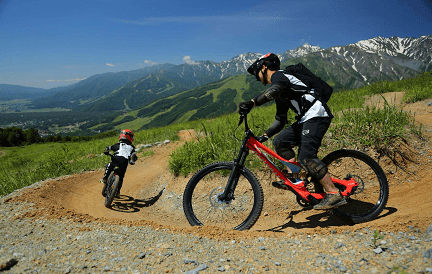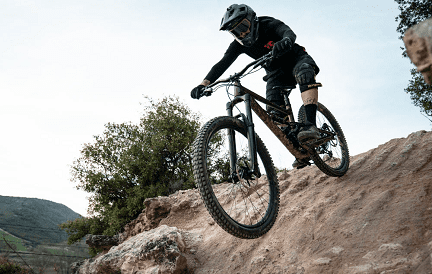MTB pedals for less demanding people or those who expect full freedom of movement, simple platform pedals are a perfect choice. On the other hand, owners of road bikes and MTB often opts for clipless bike pedals.
- Part 1: Introduction
- Part 2: Buying Guide
- Part 3: Recommendations
- Part 4: Selection Guide
- Part 5: Frequently Asked Questions
Part 1: Introduction
MTB pedals are responsible for transferring power to the drivetrain. This inconspicuous element determines how much energy you have to achieve the desired speed. However, it is impossible to unambiguously state good bicycle pedals because they come in different variants, adjusted to different needs.

Part 2: Buying Guide
Types of Bike Pedals
Mountain bike pedals come in several types. The simplest is platform models, which are popular, especially among fans of urban or recreational riding, but not only. They are extremely versatile because you do not need to be a skilled cyclist to use them safely. During the ride, your legs have full freedom of movement, so you can easily protect yourself in case of danger of overturning.
These models have a very simple design, and the range includes metal pedals made of aluminium or steel and plastic pedals – the economy version. However, no matter what material the platforms are, their task is to provide secure support for the foot. Before snap-on models were popular, bicycle pedals with nose pads were popular.
Snapper Pedals
For cyclists with greater needs, good pedals for MTB clip-in pedals are to make pedalling more efficient. One of the most popular is the system by Shimano, the SPD (Shimano Pedaling Dynamics) pedals. Unlike platform models, they require the use of special shoes. This solution results in better power transmission because we could press this type of pedal down.
Users of MTB pedals and those equipped with other clip-on systems are mainly by professional cyclists – road and mountain riders, for whom results count. Riding on them requires a lot of practice. And they need to practise fast engaging and disengaging. Interestingly, SPD can also be used with everyday shoes, but it is advisable to equip yourself with special caps for bicycle pedals for greater comfort on such occasions.
Traditional Pedals
If you use your bicycle for a typical recreational ride, e.g., in the city and outside it, it is enough to equip your machine with ordinary, traditional pedals. Among traditional pedals, the most popular are platform pedals made of a piece of plastic or metal covered with an anti-slip layer.
Traditional pedals can be used to ride in any type of shoes and barefoot. Their more advanced version is platform pedals with spikes that fit into holes in specialized shoes – most commonly found in mountain bikes. There is also a version with special pedals with a strap, which prevents your foot from slipping off the shoe and increases riding efficiency, but they also require you to develop some habits for safe riding.
Platform
These are the most popular pedals and are found on most modern bikes. They are versatile and suitable for use regardless of the type of footwear the cyclist is wearing. They are most often equipped with protrusions that provide traction. Platform models are made of plastic or metal.
This type of pedal is suitable for amateur riders. It is not recommended for professionals because of not use all the energy put into pedalling. Platform pedals for MTB and road bikes are also available in our store.
Platform Size
The body of MTB pedals has to be big so that the foot can find some support (with possibly the biggest contact surface between the shoe and the pedal). Nowadays, most manufacturers who offer this type of pedal use big enough platforms. More than 100 mm width is considered sufficient. A big platform will allow us to control the bike better, and after all, it is the basis of off-road riding. The surface also affects our “grip” between the shoe and pedal.
Pins
They also take care of our grip on the pedal surface (and they like closer encounters with our shins, so we recommend getting shin and knee protectors). The pins usually look like threaded bolts – this form provides great grip but also the possibility to adjust the height of the pins (it is good if the pins come out in the pedal “through” – this will also help us replace the pin if it breaks) or replace them. It is a good idea to check from time to time with an Allen wrench if the pins are too much tight- this will help you avoid losing them.
At this point, we will also mention shoes – when riding enduro on platforms, we recommend investing in bike shoes dedicated to this type of pedal. The soles of shoes dedicated for platforms combine strength and softness, allowing to catch an appropriate grip between the shoe and the pedal, which will allow using the platform’s full potential.
Loads
Unfortunately, this component is the one we have the least insight into, yet it is important and has a direct impact on the life of our pedals. There is no denying that MTB pedals are highly exposed to impacts and water, mud, etc. It will be best to look for pedals with well-sealed machine bearings, characterized by high resistance to weather conditions and are maintenance-free. It is worth investing in a proven product, which will serve us for a long time.
Part 3: Recommendations
Mountain biking is a particularly demanding discipline, during which both the cyclist and his bike are exposed to high forces, loads, and a much higher risk of a fall. That is why MTB pedals, like other components of a mountain bike, should be characterized by excellent workmanship, durable components, and proven technical solutions.
Pedals are one of the most important elements of bicycle construction. They are in direct contact with shoes. That is why they should provide proper stability and grip. Thanks to that, they guarantee a comfortable and safe ride. No matter what surface the bike is moving on.
On top of that, there is mechanical strength. Bicycle pedals are subjected to considerable loads, which may lead to their damage. For this reason, they must be properly resisted so that they guarantee long life. We offer pedals for bicycles in our store, which can meet all key selection criteria. We provide access to models diverse in almost every aspect, so you can easily find something for yourself. We encourage you to look at our catalogue and place an order.
Bicycle Pedal – What Kind to Choose
Due to the wide selection, it is worth starting the analysis of our offer by finding the right types of products matching your vehicle. We offer not only universal but also dedicated to specific bikes. What kind of pedals exactly? For example, MTB. Mountain riding has its own rules – it usually involves traversing poorly prepared routes full of unevenness and changeable terrain. Extreme riding may also involve jumps and sudden manoeuvres.
This translates into a lot of stress that a bicycle pedal has to cope with. If it is made of poor-quality materials, it will quickly get damaged. This, in turn, will make its use dangerous. If it falls off while riding, it is easy to fall down.
It is a good idea to protect yourself from such events by choosing pedals designed for such conditions. Of course, that is not all. You can also find pedals for road bikes, racing bikes, city bikes, or touring bikes in our catalogue. Regardless of your habits and preferred riding style, you can count on maximum comfort and safety.
Which Bike Pedal to Buy
Of course, choosing a particular type is not always enough to enjoy a stress-free ride. You should also pay attention to specific technical parameters, which also affect the usefulness of individual products. Of great importance are especially the materials. They determine the mechanical durability of the construction and its resistance to various external factors.
We offer pedals made of reinforced plastics, which can cope even with intensive loads, such as extreme riding on difficult terrain. They are nylon, which perfectly adjusts to the prevailing conditions. In addition, there can be steel pins or special anti-slip coatings, which guarantee a much better grip. They protect against accidental slipping off shoes, leading to a very dangerous situation.
We should also choose the bicycle pedal based on other parameters. It is necessary to mention their size, weight, length of noses (if any), type of bearing, and mounting method. All this to make sure that they will fit your bike.
Pedals from the Best Manufacturers
We make sure that our catalogue contains only the highest quality products. For this reason, we use products of respected companies, guaranteeing long life and excellent fit to various conditions and loads.
A wide variety of products allows you to choose the design for a specific riding style and a type of a two-wheeler you own. We offer pedals for mountain bikes, road bikes, touring bikes, performance bikes, etc. You only need to pay attention to their technical parameters and workmanship. In this way, you will gain access to accessories that will definitely improve the comfort and safety of riding.
Part4: Selection Guide
Which MTB Pedals to Choose
The range of MTB pedals is truly impressive, and the number of models, versions and compatible systems available can be overwhelming. Relax! We are here to help.
There are three types of pedals for mountain riding: clipless, platform, and dual-function models, which combine features of the two previously mentioned. In all cases, it is worth paying attention if the pedals in high-quality machine bearings, thanks to which they will be more durable and will last longer. Below is a brief description of latch and platform pedals.
MTB Platform Pedals
The ideal and recommended mountain bike pedals for beginner mountain bikers who care about learning and perfecting proper riding techniques, as they allow you to develop proper habits and reflexes. You will learn the correct technique faster and more effectively on platform pedals, which you will need anyway if you later decide to go for clipless pedals.
They provide full freedom during jumps, tricks, and jumping up and on fast, unpredictable descents. They provide a comfortable ride and control thanks to their large surface area. They have an aggressive profile for more grip and control or additional screw-in pins. Ideal for technical downhill and freeride riding.
MTB Spades
Also called SPD (from the most popular Shimano models), latches, clicks. Their introduction to the market turned out to be a revolution in cycling, allowing the cyclist to create unity with the bike and maximize pedalling efficiency. They provide excellent control over the bike and excellent support when pedalling.
They provide great comfort on ascents and descents as they prevent the feet from slipping off the pedals on uneven surfaces.
Great for races, competitions, MTB marathons, and cross country.
They require special, compatible shoes adjusted to screw in the blocks and stiffened. This makes it possible to connect the pedal to the shoe and create a latch system.
We can release the clipless shoe quickly and easily, just a slight movement of the foot in a certain direction (e.g., sideways).
They require practice, and a few test rides for a week or two to master the art of riding with SPD pedals and appreciate their revolutionary features.
To sum up, We should choose platform mountain bike pedals at the beginning of our mountain biking adventure when polishing your riding technique is the most important thing. On the other hand, ambitious, experienced cyclists who love to race and boast a good riding technique will surely enjoy riding with clipless pedals. In addition, some freeride and downhill enthusiasts opt for combo models that combine a platform pedal with a latching function.
Part5: Frequently Asked Questions
Do MTB Pedals Come as Pair
While the lower-end mountain bikes do come with pedals, they come with a pair of cheap pedals. The higher-end bikes also focus more on other bike components because they know that the pedals are rider specific. Where one rider might be comfortable with clipless, others might prefer only flats.
How do I Choose the Right Pedals
Flat bicycle pedals: Choose clipless pedals if you want more efficiency and control; with your shoes connected to your pedals, you transfer power when you pull up and push down. Choose flat pedals if you need to quickly take your feet off the pedals or want comfort while walking in shoes that don’t have cleats.
Are MTB Pedals Standard Size
The 9/16″ is the most common pedal thread size on the market today and is the size that most manufacturers use for their pedals. Almost all modern adult bikes have the 9/16″ pedal with 20 threads per inch (TPI).


